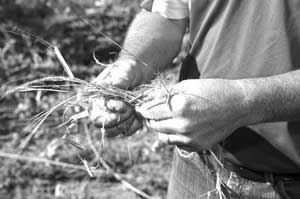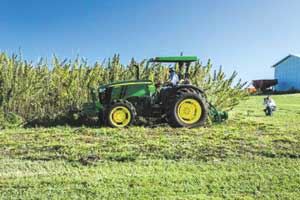|
UK Harvests Hemp
LEXINGTON, KY.
University of Kentucky researchers harvested the university’s first hemp crop in decades today.
“It was a good growing season for many crops, not just hemp,” said David Williams, UK College of Agriculture, Food and Environment agronomist and co-project lead. “Precipitation was excellent this year and more than adequate for growth. The only downside to the growing season was that we planted a little bit late, but I don’t think that had much effect on the crop.”
UK’s research plot, planted May 27, was one of the Kentucky Department of Agriculture’s pilot studies to reintroduce hemp production in Kentucky. UK’s study was conducted in conjunction with Eastern Kentucky University and Kentucky State University.
“Congratulations to the University of Kentucky and all of our partners in the hemp pilot projects on the first hemp crop in Kentucky in almost 70 years,” said Agriculture Commissioner James Comer, who has championed the cause of returning hemp production to the commonwealth. “This crop will yield significant data about production techniques, which varieties do best in Kentucky and which of the many uses of hemp are most likely to succeed here.”


Rich Mundell, UK agronomist, harvests UK's hemp research plot.
PHOTO: Steve Patton, UK Agricultural Communications
Kentucky was a national leader in hemp production before the crop was outlawed in the United States due to its similarity to marijuana. Many agricultural advances have occurred since then, so research trials were necessary to determine the crop’s viability in an ever-changing agricultural economy.
UK researchers used a sickle bar mower to harvest the crop in the same manner that hay is harvested.
“Our plan was to simply lay the crop on the ground where the elements will begin to break down or ‘ret’ the hemp,” said Rich Mundell, co-project lead and an agronomist in the Kentucky Tobacco Research Development Center. “Because the hemp was very tall (about 10 feet) we felt the sickle bar mower would do a better job than a more commonly used disc mower.”
UK’s research project included 13 different varieties managed for either fiber production or seed production.
After the harvest, researchers will analyze and compare the different varieties to find one that’s best suited for the state and then present the results to the Kentucky Department of Agriculture. ∆
|
|